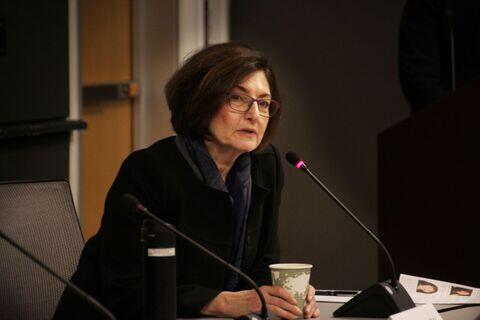
What does scientific leadership through communication look like? What advice would you give to young scientists in order to improve their communication skills with fellow researchers and the general public? What advice would you give specifically to female scientists to develop their leadership and communication skills in order to be heard? These are some of the difficult questions that Dean Linda Fried, MD, MPH, of Columbia University’s Mailman School of Public Health tackled on January 14, 2016. Dr. Fried served as the keynote speaker at the third Lasker Lessons in Leadership lecture held on the main campus of the National Institutes of Health (NIH) in Bethesda, Maryland.
Dr. Fried is a leader in the fields of epidemiology and geriatrics who has dedicated her lengthy career to the science of healthy aging and understanding the transition to a world where greater longevity benefits people of all ages. An internationally renowned scientist, she has done influential work in defining frailty as a medical condition, examining its causes, and educating society on the potential for prevention to maximize health for older adults. Under Fried’s leadership, the Mailman School continues to be a groundbreaking institution in transforming the health of populations and is one of the top five NIH-funded schools of public health.
Dean Fried opened her lecture in quoting renowned historian David McCullough: “We need leaders, and not just political leaders. We need leaders in every field, in every institution, in all kinds of situations. We need to be educating our young people to be leaders. And unfortunately, that’s fallen out of fashion.” Dr. Fried went on to articulated her three-point thesis on what leadership has looked like in her career as a scientist, clinician, and public health servant. She pointed out to the trainees that “leadership is developed at every single stage of what you do.” She impressed upon the trainees that communicating the importance of what you do, to all constituents, in an effective and meaningful way, whether orally or in written form, is the point at which science becomes leadership through communication. Dr. Fried closed her talk by stating that “the bridge between science and leadership is communication,” and that “leaders inspire and motivate to a vision, mission, and excellence that enables us to change the world for the better through what we do.”
Following Dr. Fried’s talk, a mentor panel, consisting of Dr. Fried; Dr. Michele Hogan, Executive Director of the American Association of Immunologists; Dr. Linda Huynh, Scientific Writer/Editor in the Public Communications Branch at the Eunice Kennedy Shriver National Institute of Child Health and Human Development, NIH; and Dr. Tom Wynn, Chief of the Immunopathogensis Section, Laboratory of Parasitic Disease at the NIAID and NIH Oxford-Cambridge Scholars Program director, held an interactive session, fielding questions from students present in the auditorium and via video cast for students attending remotely from the Universities of Oxford and Cambridge.
In the afternoon, students had the opportunity to view a short video on effective communication tips and participate in a small group interactive assignment answering the question: “How would you explain your science to your friend, a car salesman, whom you have not seen in twenty years?” Members of the mentor panel, Dr. Fried, and NIH leadership served as small group facilitators, giving the students a chance to have additional and more focused mentoring time.
The Lasker Lessons in Leadership program is a collaborative effort developed in 2015 by the International Biomedical Research Alliance, the Albert and Mary Lasker Foundation, and the NIH Oxford-Cambridge Scholars Program. The goal is to help the next generation of physicians and scientists develop the leadership skills necessary to advance scientific discovery. The lectureship series include a formal curriculum addressing eight distinct career-relevant leadership topics aimed at postgraduate medical research students. The program is also open to NIH graduate students on a limited basis and available for public viewing via the NIH video cast. The Lasker Lessons in Leadership series has been generously co-sponsored by WIRB-Copernicus Group (WCG), the world’s largest provider of regulatory and ethical solutions for clinical research, and Certara, a global biosimulation and regulatory writing company committed to optimizing drug development decisions.
The next Lasker Lessons in Leadership lecture will be held on March 31, 2016 on the main campus of the NIH in Bethesda, Maryland. The keynote speaker will be Dr. Craig Thompson, President and CEO of Memorial Sloan-Kettering Cancer Center in New York City, with mentor panel including/featuring Dr. John Niederhuber and Dr. Christina M. Annunziata.
For additional information regarding the Lasker Lessons in Leadership series, please contact Randi Balletta at [email protected].
Dr. Linda Fried’s keynote address and the panel discussion video cast is archived at http://videocast.nih.gov/PastEvents.asp?c=0&s=1.
Further information about the NIH Oxford-Cambridge Scholars Program can be found at http://oxcam.gpp.nih.gov.
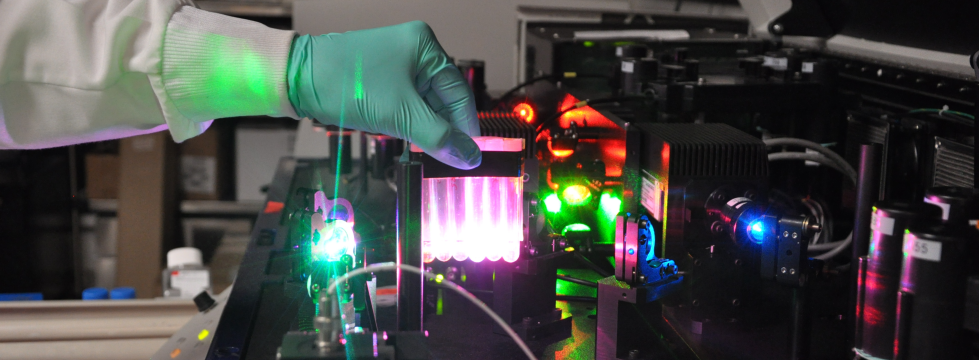
A recent edition of the NIH National Cancer Institute Center for Cancer Research publication, CCR Connections, includes a significant article entitled “A Special Relationship.” In the article, current and former scholars in the NIH Oxford-Cambridge Scholars Program discuss this unique partnership program between the NIH and Oxford and Cambridge Universities. Read the full article here: http://home.ccr.cancer.gov/connections/…/Vol9_No1/news_7.asp
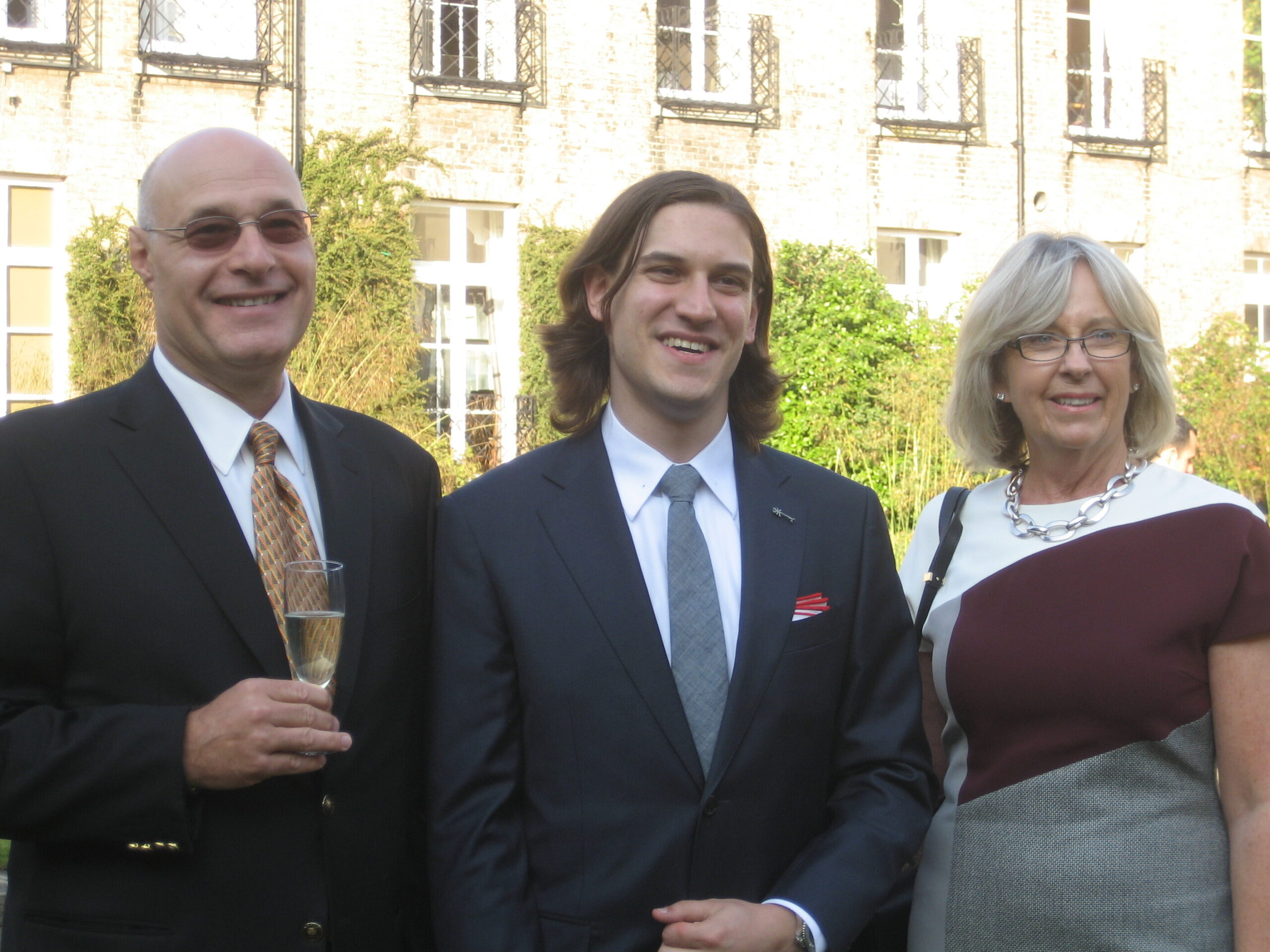
The International Biomedical Research Alliance is delighted to announce the creation of the El-Hibri Biomedical Research Scholarship in support of the NIH Oxford-Cambridge Scholars Program. Named in honor of Fuad El-Hibri, Alliance Board Director and founder of vaccine developer Emergent BioSolutions, the inaugural scholarship has been awarded to the Iain Fraser lab at the NIH/NIAID in recognition of Samuel Katz, a member of the NIH Oxford-Cambridge Scholars Program Class of 2015.
Sam first observed the deciphering power of molecular biology when he shadowed a number of scientists while pursuing his GED diploma in 2008. After a year of working beside scientists, Sam enrolled at Stony Brook University and began his formal education in the sciences.
In 2012 Sam joined the research group of Dr. Bethany Moore at the University of Michigan. As a summer research fellow, Sam studied the phenomenon of patients experiencing increased vulnerability to infection following a bone marrow transplant. In 2013, Sam went to Germany on a Fulbright Scholarship to work with Dr. Baris Tursun at the Berlin Institute for Medical Systems Biology.
For his doctoral work in Fraser’s lab at the NIAID, Katz will conduct a research project entitled “Multi-scale analysis of the innate immune response to microbial stimuli” in collaboration with his NIH mentors, Dr. Iain Fraser, and Prof. Clare Bryant at the University of Cambridge.
International Biomedical Research Alliance President Randi Balletta said, “It has long been a dream at the Alliance to extend our support of the NIH Oxford-Cambridge Scholars Program to include the provision of scholarship funds directly to NIH laboratories where scholars are conducting groundbreaking research. With grateful appreciate to Fuad and Nancy El-Hibri, the El-Hibri Biomedical Research Scholarship has become the realization of this dream. We hope that this act of generosity will inspire others to do likewise in support of biomedical research, in particular the work of the talented young scientists in the NIH Oxford-Cambridge Scholars Program.”
For additional information on supporting the Alliance, please contact Tina Krall, Director of Development at [email protected]
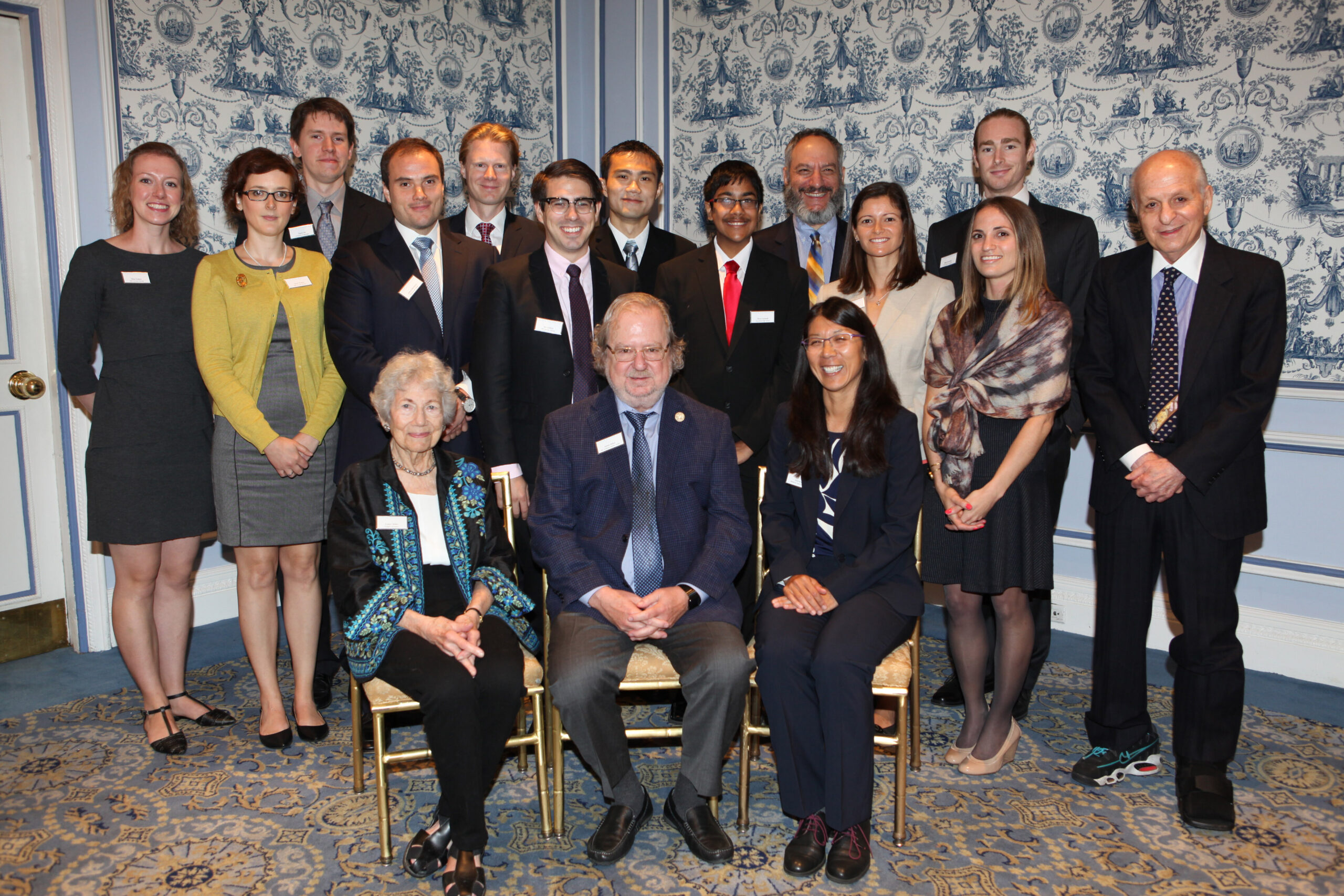
It has become an annual September experience for Scholars in the NIH Oxford-Cambridge Scholars Program to travel to New York City to attend several events centered on the Albert and Mary Lasker Foundation’s Lasker Awards. For the handful of selected scholars in advanced stages of completing their Ph.D. or M.D./Ph.D., the purpose of these events was to provide opportunities for expanded learning, building presentation skills, networking, and gaining sage advice from the Lasker winners themselves as they reflected upon their careers in scientific discovery.
Arriving in New York on the afternoon of Wednesday, September 16th, the scholars were the guest of Dr. Arthur Caplan, the Drs. William F. and Virginia Connolly Mitty Professor of Bioethics and the founding director of the Division of Medical Ethics at New York University Langone Medical Center’s Department of Population Health. Dr. Caplan, a renowned bioethicist, met with the students and provided a talk entitled “The Ethical Challenges of Compassionate Use and Expanded Access.” Dr. Caplan shared stories and opinions about a variety of medical ethics topics ranging from informed consent to distribution of pharmaceuticals before they have completed the FDA approval process in order to treat patients with no other treatment options. An attending scholar noted that Dr. Caplan’s honesty and openness led to very interesting conversations about these extremely important topics, some of which they had not before considered.
On Thursday morning, the group visited the campus of Regeneron Pharmaceuticals in Tarrytown New York. The day began with a meeting and discussion with Dr. George Yancopoulos, M.D., Ph.D., Founding Scientist, President, and Chief Scientific Officer of Regeneron, followed by a tour of the campus, presentations made by Regeneron scientists and presentations made by the Scholars. NIH Oxford Scholar, Angela Ianni, who is pursuing her M.D./Ph.D., commented, “the visit to Regeneron was a wonderful opportunity to learn about career paths for physician scientists other than the traditional academic track. I was especially impressed with the way that Regeneron prioritizes technology development first (e.g. VelociGene, VelociMouse, and a completely automated Genetics Center), knowing that a groundbreaking technology will eventually lead to the discovery of many treatments. As a neuroscientist, this is especially relevant in light of the NIH’s recent BRAIN initiative to fund the development of innovative neurotechnologies to spur advances in the field of mental health.” NIH Oxford Scholar/Churchill Fellow (pursuing M.D./Ph.D.), Michael Gormally noted that “Touring Regeneron’s headquarters was a fantastic opportunity to get a sense for how fast the field of immunology is revolutionising treatment of a vast array of human disease. Dr. Yancopoulos is a particular inspiration of mine because he’s a prime example of the value in doing great research and sticking to your convictions while the field catches up to you. For someone like me, who wants to be a part of drug discovery, it was very motivating.” Further, NIH Cambridge Scholar (pursuing M.D./Ph.D.) Josh Bernstock commented that the time spent at Regeneron was formative for him, “they truly embody the essence of translational science/medicine.”
Later in the evening, the scholars attended a cocktail reception held in their honor at the home of an Alliance board member. Guests included exceptional leaders in biomedical research, business, publishing, academia, New York area alumni of the program, and a Pulitzer Prize winning author. This provided an excellent opportunity to network and gain career advice as well as for the scholars to share the nature of their research and practice their “elevator speech.”
On Friday morning, September 18th, the scholars attended the Breakfast at Lasker event, a private breakfast with the winners of the 2015 Lasker Awards (learn more about the Albert and Mary Lasker Foundation and this year’s winners by visiting www.laskerfoundation.org). During the breakfast, each scholar had the opportunity to ask the winners questions. A vast range of questions was put forth, including: What helped you stay creative? What was the lowest point of your career? When did you know that you made a groundbreaking discovery? How did you choose a mentor? Sitting down with Albert Lasker Basic Medical Research Award winner Evelyn Witkin was, for the scholars, an unparalleled experience. Michael Gormally remarked “I had long drawn inspiration from Evelyn Witkin. In the 1940s she was the first to realize that DNA can and must repair itself to maintain the integrity of the genome. Her discoveries set off a paradigm shift in medicine and how we think about the environmental factors of human disease. A random mutation in this repair machinery brought on by UV-damage is the cause of melanoma, which kills 10,000 Americans annually. I was able to solicit her advice on how to lead a passionate career, while also preserving a healthy balance to raise a family. At the beginning of my career, I found her distinguished perspective invaluable.” Further, Angela Ianni remarked: “The highlight of the trip for me was the Breakfast at Lasker. The Lasker Award winners were truly inspiring and gave very insightful answers to our questions about a variety of topics that were really getting at a bigger question that no one explicitly asked – How can we be more like them? I came away from that experience with a renewed excitement about not only my research and career path, but about the breakthroughs and new treatments that the field as a whole will come up with in my lifetime.”
Perhaps one of the most moving statements of the morning came from Joanne Liu, International President of Medecins Sans Frontieres (Doctors Without Borders), who represented the organization as the winner of the 2015 Lasker~Bloomberg Public Service Award, when she implored that scholars saying, “We need you to find out. We need you to learn more about Ebola.” The Lasker winners also shared these pearls of wisdom with the scholars:
- Welcome the difficulties
- Be persistent – don’t get stuck
- If you believe that what you are doing is right, keep doing it
- A mentor is someone who keeps believing in you even when you don’t
- Sometimes the planets line up
- Share your data and the work you are doing
- Don’t be part of the herd
- Go beyond the boundaries of your immediate interest
- Sometimes you have to take time for yourself and get out of the lab
- Make time to educate the public
- Practice your communication skills
- Share your science with non-scientists and do so with respect
The afternoon reception and Lasker Awards Luncheon rounded out the visit. The Scholars returned to the NIH energized, renewed, and ready to get back to their research. These experiences could not have been possible without the generosity of Dr. Arthur Caplan and NYU Langone, Dr. George Yancopoulos and Regeneron Pharmaceuticals, Dr. Claire Pomeroy and Mr. Michael Overlock of the Lasker Foundation and Board of Directors, and supporters of the International Biomedical Research Alliance.
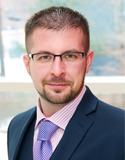
Paul Tesar – a former NIH-Oxford-Cambridge Scholar was featured in Nature discussing how having two mentors can lead to breakthrough research.
The article below is posted online with the permission of Nature Publishing Group. The original article can be found here.
Turning point: Paul Tesar
By Virginia Gewin
Nature 522, 381 (2015) doi:10.1038/nj7556-381a
- Published online 17 June 2015
This article was originaly published in the journal Nature
Paul Tesar discovered a new type of mouse stem cell in 2007 and published his discovery in Nature as a graduate student at the University of Oxford, UK. The paper launched him rapidly to a professorship at Case Western Reserve University (CWRU) in Cleveland, Ohio, where he continues to drive the field forward.
How did your graduate experience shape your career pursuits?
I was part of a joint programme — the US National Institutes of Health (NIH) Oxford–Cambridge Scholars Program — and split my time working with NIH human-stem-cell biologist Ron McKay and Oxford mouse embryologist Richard Gardner. I had a great deal of independence from day one. My first publication was a solo-authored paper in theProceedings of the National Academies of Science (P. Tesar Proc. Natl Acad. Sci. USA 102, 8239–8244; 2005) — a feat almost unheard of today.
How crucial was the fellowship to your stem-cell discovery?
I didn’t set out to discover another pluripotent state. But my ‘eureka’ moment came when I derived mouse embryonic stem cells with similar characteristics to human ones, including the ability to differentiate into all other tissue types, known as pluripotency (P. Tesar et al. Nature 448, 196–199; 2007). It took a while to prove that there was more than one pluripotent state, but that paper triggered a frame shift in the field. Epiblast stem cells would have been discovered anyway, but drawing the NIH and Oxford research together put that revelation in our hands. So strongly do I feel that dual mentoring arrangements are fruitful, that I encourage my students to find mentors with different skill sets.
What happened after the epiblast publication?
I was looking for my next position and wanted to maintain my level of independence. I also wanted to go back to Cleveland someday, and the CWRU — where I earned my bachelor’s in biology — encouraged me to return. After I explained my goals, they created a one-off position that gave me a few years of funding and my own independent lab straight away. Things went better than I could have hoped. I hired good people and published some strong papers. The next year, at 28 years old, I applied for a faculty position. It was a whirlwind experience.
How did you maintain momentum?
In 2010, I was named a New York Stem Cell Foundation Robertson Investigator, which gave me US$1.5 million in innovation funding. That was enough to grow my lab from 3 to 12 members and to drive our research into unexplored areas. It was such a new field that I was able to rapidly address some major questions.
Is stem-cell biology entering a ‘golden age’?
People have expected much from this promising field; it is time to deliver. Stem-cell transplantations are feasible and will continue to advance — and we are learning how to control stem-cell populations to perform specific functions. For example, recently, we screened for drugs that can stimulate the generation of a brain-cell type that is typically lost in diseases such as multiple sclerosis. There has been a huge uptick in the number of stem-cell-based trials, and the results of those will guide the future.
Do you do much work at the bench?
I would love to, but I spend most of my time writing grant proposals and renewals, progress reports and paper reviews. Unfortunately, I am really there only during the holidays after I have sent everyone home. They trust me enough to grow cells.
What is the best career advice that you have given or received?
They are one and the same: maintain work–life balance. The 24–7 culture of always answering e-mail and working through the night is counterproductive. I tell my students that working 12–15 hours a day does not equal a Nature paper; being smart about which experiments you pick will get you high-profile publications. When people are happy and stress-free, they can be creative and explore new areas.





